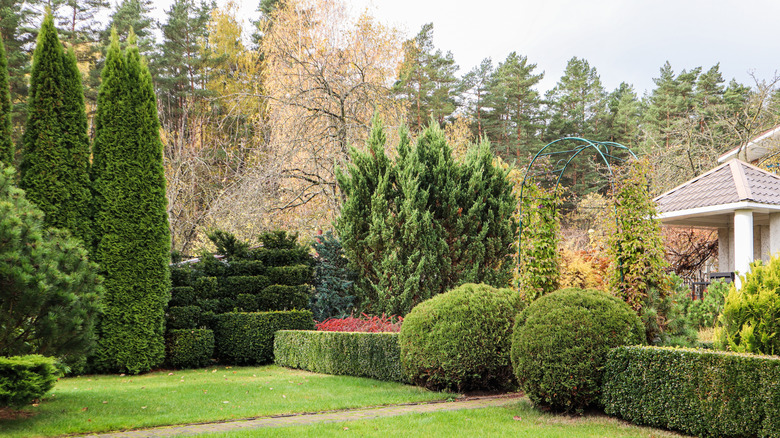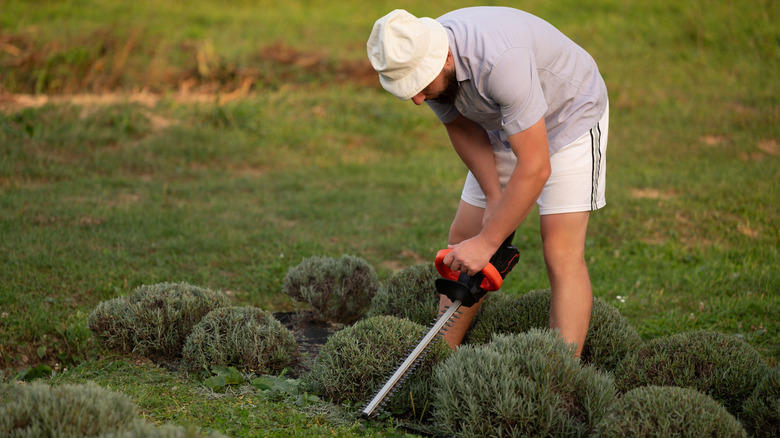A Living Hedge Edge Will Give The Perfect Country Garden Feel
One of the mainstays of "country garden style," sometimes known as an English country landscape design, is symmetry and order. Not to be confused with the less-formal French country landscape design or cottage garden styles, this design creates neat paths between separate parts of your garden with landscape edging. Although there are many different types of garden edging you can choose, such as using stones or plastic, a living hedge is environmentally friendly, cost-effective, and can be low maintenance.
Living hedges are more environmentally friendly than typical landscape edging because they can provide a source of food and shelter for pollinators. They're also natural, unlike plastic options. Living hedge edges are beneficial as well because they help to reduce erosion and boost soil health. Growing a living hedge edge for your garden can be a cost-effective selection, too. Depending on the type of plant selected, you can spend as little as $15 or as much as $80 per plant. Seeds are a different story and can be much cheaper, at times as low as $3 depending on where and how many you purchase.
Especially if you're a beginner on your gardening journey, you might want to choose low maintenance hedge plants for your living edge like boxwoods (Buxus), 'Red Edge' hebe (Veronica 'Red Edge'), or box leaf honeysuckle (Lonicera pileata). Lavender is also a popular alternative hedge option for a more fragrant experience. However, if you choose to plant boxwood, there is an invasive pest known as the box tree moth that can kill seedlings, so you may have to invest extra time pruning the plant and removing larvae.
Tips for growing and maintaining living hedge edges
Once you have your plants selected, it's time to choose a location to place your living edges. Some locations that are popular include along porches or decks, as a walking path directing visitors to separate parts of the garden, or around bird baths and fountains.
Ensure any plants you plan to shear are planted closer together. If you plan on leaving your hedges more natural, they can be planted further apart, but for achieving the specific country garden style, you may want to shear them to create a more symmetrical, uniform look. Be warned: over-shearing hedges can weaken them, because shearing removes new leaves from the top of the plant. Typically, the best time to trim your hedges is in early spring, but knowing when and how often to trim your hedges is largely dependent on the type of plant you select. For example, if you selected yew for your living hedge edge, you might only trim it once a year.
Once planted, layer organic mulch around the base of your living hedge edge to help it retain moisture and keep weeds at bay. A consistent watering schedule is also key, especially in the early stages of your hedge maintenance. New hedges require increased watering, so you should be watering them daily for the first week or two, then every two to three days until between three and twelve weeks after planting.

